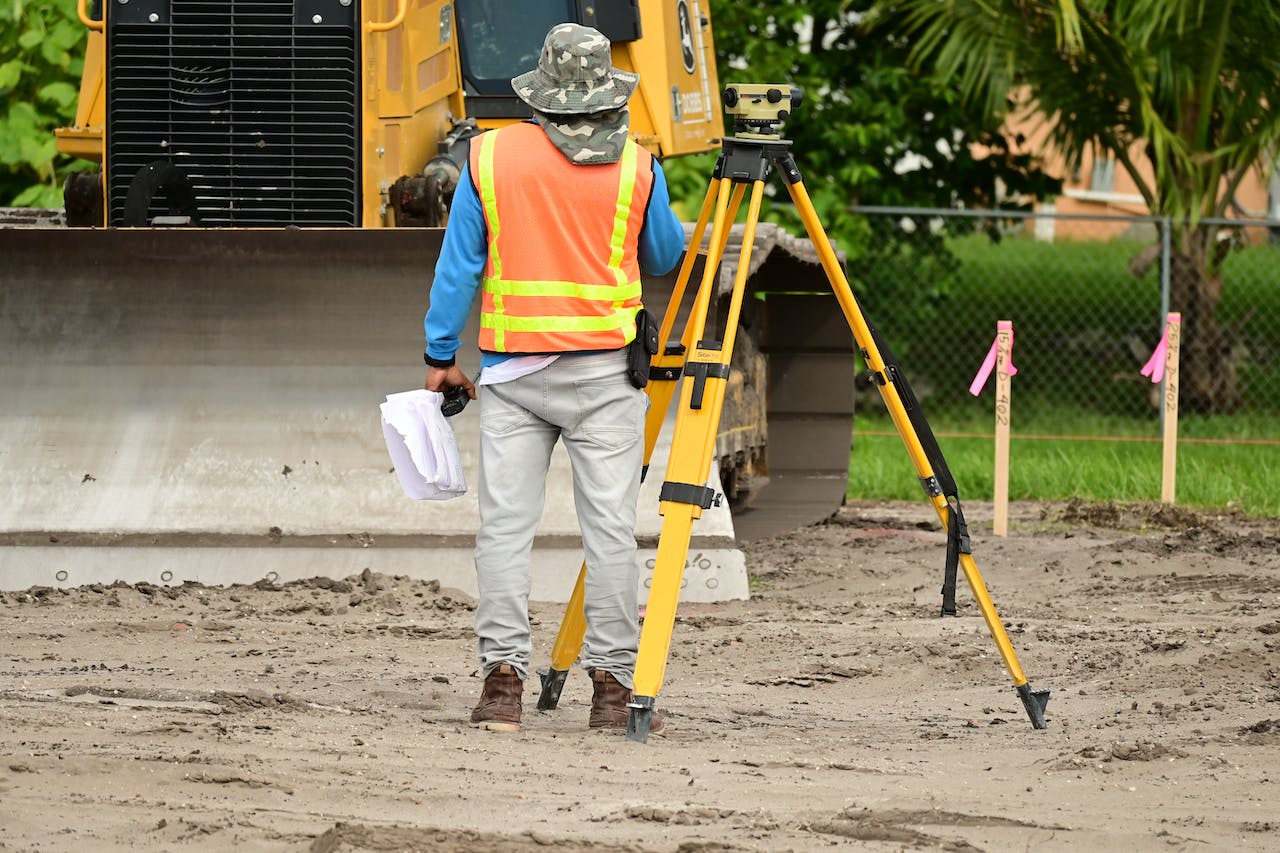Home Improvement
Types of Soil Tests for Building Construction: Ultimate Guide

The different types of soil tests for building construction include the moisture content test, specific gravity test, compaction test, dry density test, plastic limit test, shrinkage limit test, liquid limit test, and permeability test. These tests help determine important characteristics of the soil, such as its ability to hold water, its density, and its load-bearing capacity.
Proper soil testing is crucial in construction projects to ensure the stability and safety of the structure being built. By using a combination of these tests, engineers and construction professionals can assess the suitability of the soil for different types of foundations and make informed decisions during the construction process.
Introduction To Soil Testing
Discover the various types of soil tests for building construction, including moisture content tests, specific gravity tests, and compaction tests. These tests help determine the quality and suitability of the soil for construction projects.
Purpose Of Soil Testing
Soil testing is a crucial step in the process of building construction. It involves evaluating the physical and chemical properties of soil to determine its suitability for construction projects. The primary purpose of soil testing is to gather important data that helps architects, engineers, and contractors make informed decisions about the design and foundation of a building.
Importance Of Soil Testing In Building Construction
Soil testing holds immense importance in the field of building construction. It helps in ensuring the safety, stability, and longevity of a structure. Here are some key reasons why soil testing is essential:
- Foundation Design: Soil testing enables engineers to determine the type of foundation best suited for a particular site. The strength, bearing capacity, and settlement characteristics of the soil impact the choice of foundation type, be it shallow or deep.
- Structural Stability: By analyzing the soil’s properties, such as its compaction, permeability, and moisture content, soil testing helps determine the potential risks and challenges a structure may face. This knowledge allows engineers to design appropriate reinforcement measures to ensure the stability of the building.
- Cost Optimization: Soil testing helps in optimizing construction costs by avoiding potential issues that may arise due to poor soil conditions. It enables the selection of suitable construction techniques, materials, and foundation systems, thus preventing costly modifications or repairs in the future.
- Compliance with Regulations: Construction projects need to adhere to building codes and regulations, which often include soil testing requirements. Soil testing ensures compliance with these regulations, reducing the risk of legal complications or structural failures.
Overall, soil testing is a critical process that forms the foundation for successful and safe building construction. It provides crucial insights into the soil’s properties, enabling professionals to make informed decisions that ensure the structural integrity and longevity of the building.
Common Types Of Soil Tests
Soil testing is a crucial step in any building construction project as it helps determine the suitability and strength of the soil. There are several types of tests that are commonly performed to evaluate different properties of the soil. In this section, we will explore the following common types of soil tests:
Moisture Content Test
The moisture content test is used to measure the amount of water present in the soil. This test is essential as the water content of the soil affects its engineering properties, including strength, compaction, and shrinkage. It is typically performed by taking a known weight of soil and drying it in an oven until all the moisture evaporates. The resulting weight loss is then used to calculate the moisture content percentage.
Specific Gravity Test
The specific gravity test determines the density of soil particles relative to the density of water. It provides valuable information regarding the particle size distribution and the void ratio of the soil. The test involves taking a known weight of soil and measuring its volume, both in air and after saturating it with water. By comparing these measurements, the specific gravity of the soil can be calculated.
Dry Density Test
The dry density test, also known as the bulk density or unit weight test, is used to determine the weight of soil per unit volume when it is in a completely dry state. This test is crucial in assessing the compaction characteristics of the soil, which is essential for designing stable foundations and structures. The test is conducted by obtaining a sample of soil, drying it to remove all moisture, and then measuring its weight and volume.
Atterberg Limits Test
The Atterberg limits test is performed to determine the plasticity and the water content at which soil undergoes various consistency changes. It helps in classifying the soil into different categories based on its behavior during different moisture conditions. The test involves determining the liquid limit, plastic limit, and shrinkage limit of the soil through specific laboratory procedures.
Compaction Test
The compaction test evaluates the ability of soil to withstand loads and resist deformation. It is a vital test for assessing the suitability of the soil for construction purposes, as well as for designing earthwork projects. The test is carried out by compacting a soil sample using a standard compaction apparatus and measuring its dry density and moisture content.
Pocket Penetrometer Test
The pocket penetrometer test is a quick and simple method to determine the consistency and strength of cohesive soils. It involves inserting a penetrometer into the soil and measuring the resistance it encounters. By comparing the readings with a pre-calibrated chart, the pocket penetrometer test can provide an estimate of the soil’s unconfined compressive strength.
Soil Bearing Capacity Tests
Soil bearing capacity tests are crucial for ensuring the stability and safety of building constructions. These tests help determine the maximum load that the soil can support, which is a vital consideration in the design and construction process. There are several types of tests that can be conducted to determine soil bearing capacity:
Standard Penetration Test (spt)
The Standard Penetration Test, also known as SPT, is the most widely used method for determining the subsurface soil properties. In this test, a drilling rig is used to drive a thick-walled tube into the ground. The number of blows required to penetrate the soil to a certain depth is recorded. This data is then used to calculate the soil’s bearing capacity and other important factors.
Cone Penetration Test (cpt)
The Cone Penetration Test, or CPT, is another common method used to evaluate soil properties. During this test, a cone-shaped tip is pushed into the ground at a constant rate. The resistance, pore pressure, and other parameters are measured as the cone penetrates the soil. This data is then used to determine the soil’s bearing capacity and other relevant information.
Plate Load Test
The Plate Load Test involves the application of a static or dynamic load on a steel plate placed on the ground surface. The settlement or deflection of the plate under the applied load is measured, and this data is used to calculate the soil’s bearing capacity. This test is often performed to validate the results obtained from other tests such as SPT and CPT.
Overall, conducting soil bearing capacity tests, such as the Standard Penetration Test, Cone Penetration Test, and Plate Load Test, is essential for ensuring the stability and safety of building constructions. These tests help engineers make informed decisions during the design and construction process to prevent potential soil-related issues in the future.
Frequently Asked Questions Of Types of Soil Tests for Building Construction
What Are The 3 Main Types Of Soil Testing?
The three main types of soil testing for building construction are moisture content test, specific gravity test, and dry density test.
How Do You Test Soil For Building Construction?
Soil for building construction can be tested using various methods, including the moisture content test, specific gravity test, compaction test, dry density test, and soil testing. Other tests include the plastic limit, shrinkage limit test, liquid limit, and permeability. Equipment like soil testing kits and soil moisture meters can also be used for testing.
What Is Field Test Of Soil For Construction?
The field test of soil for construction involves various types of tests such as moisture content, specific gravity, compaction, dry density, plastic limit, shrinkage limit, liquid limit, and permeability. These tests help determine the suitability and properties of the soil for building purposes.
Soil bearing capacity tests are also conducted to determine the maximum load the soil can support.
What Is A Soil Bearing Test For Construction?
A soil bearing test for construction is conducted to determine the maximum load that the soil can support. Common tests include standard penetration tests, cone penetration tests, and plate load tests. These tests help assess the soil’s bearing capacity and ensure safety during construction.
Conclusion
To ensure a strong and stable foundation for building construction, various soil tests are required. These tests include the moisture content test, specific gravity test, compaction test, and many more. Each test provides crucial information about the soil’s characteristics and its suitability for construction purposes.
By conducting these tests, engineers can make informed decisions regarding the type of foundation and construction methods to employ. Ultimately, these soil tests play a vital role in ensuring the safety and durability of any building project.












